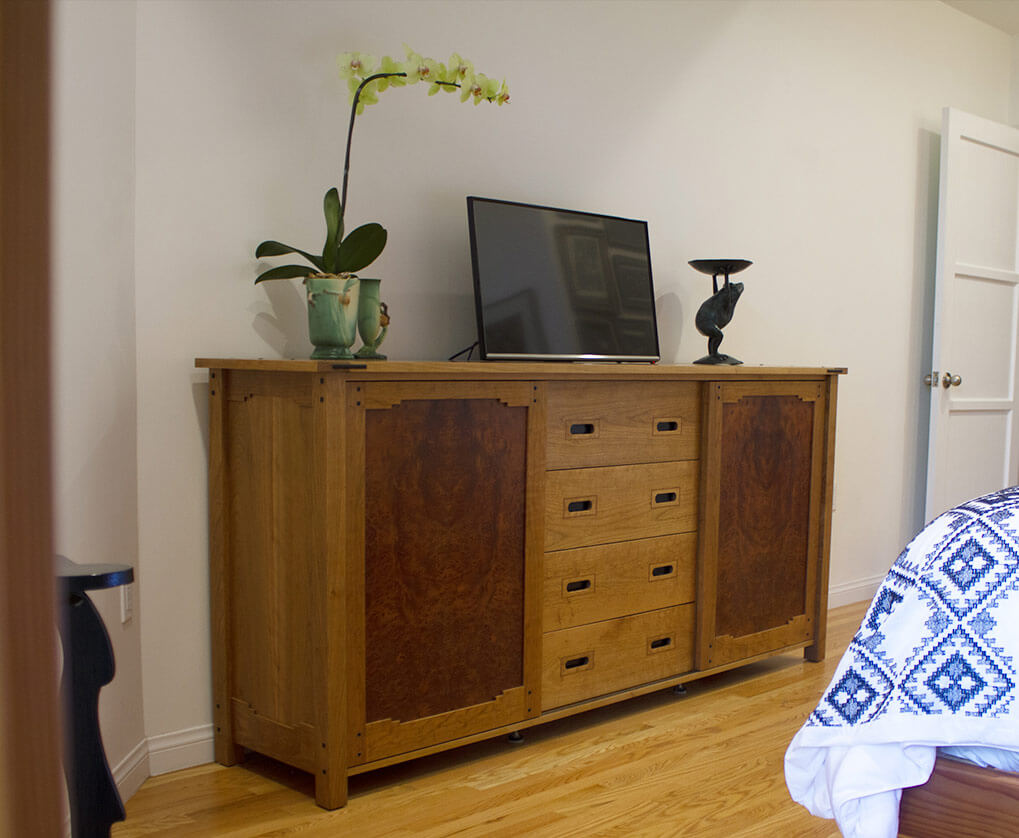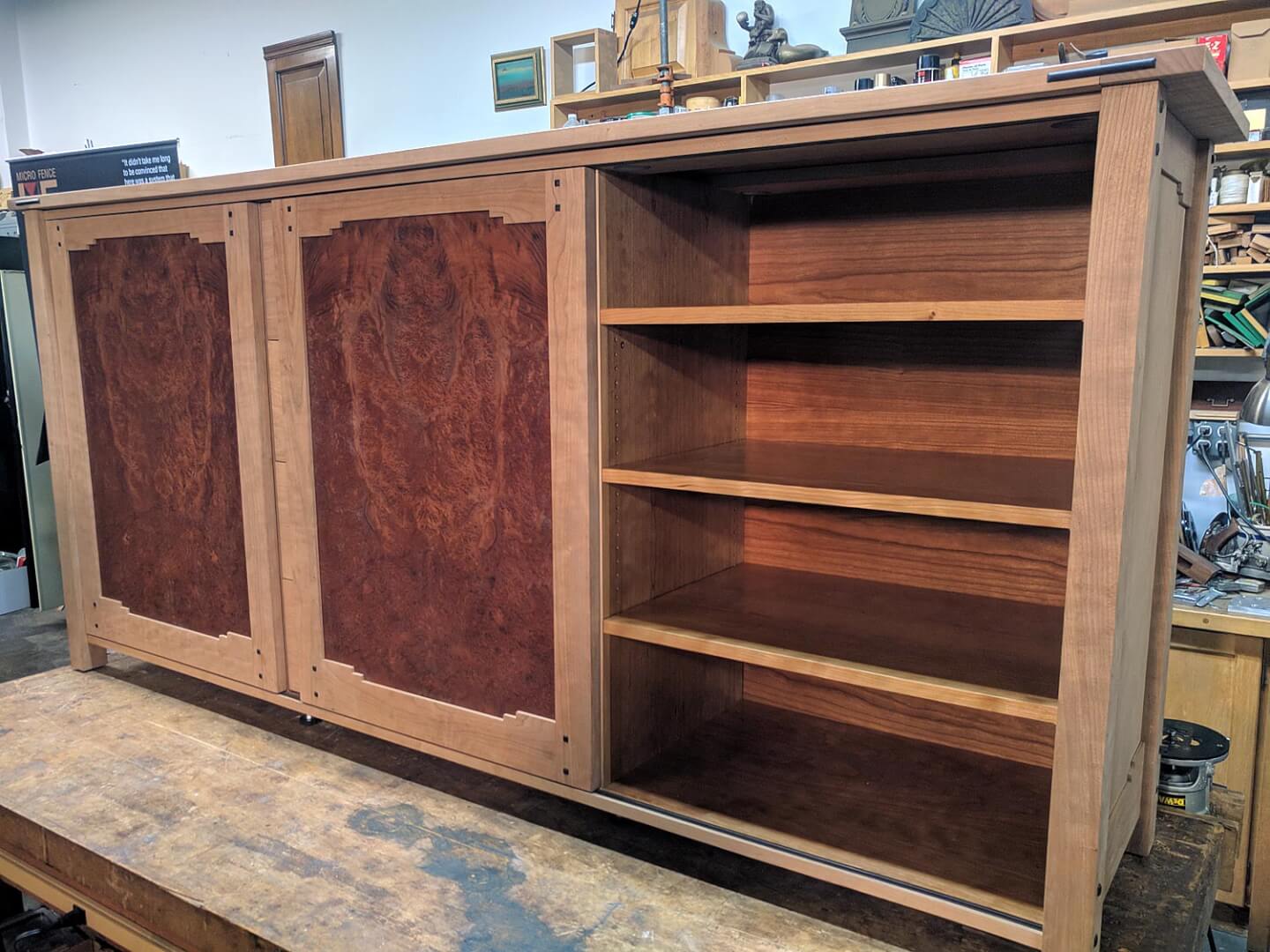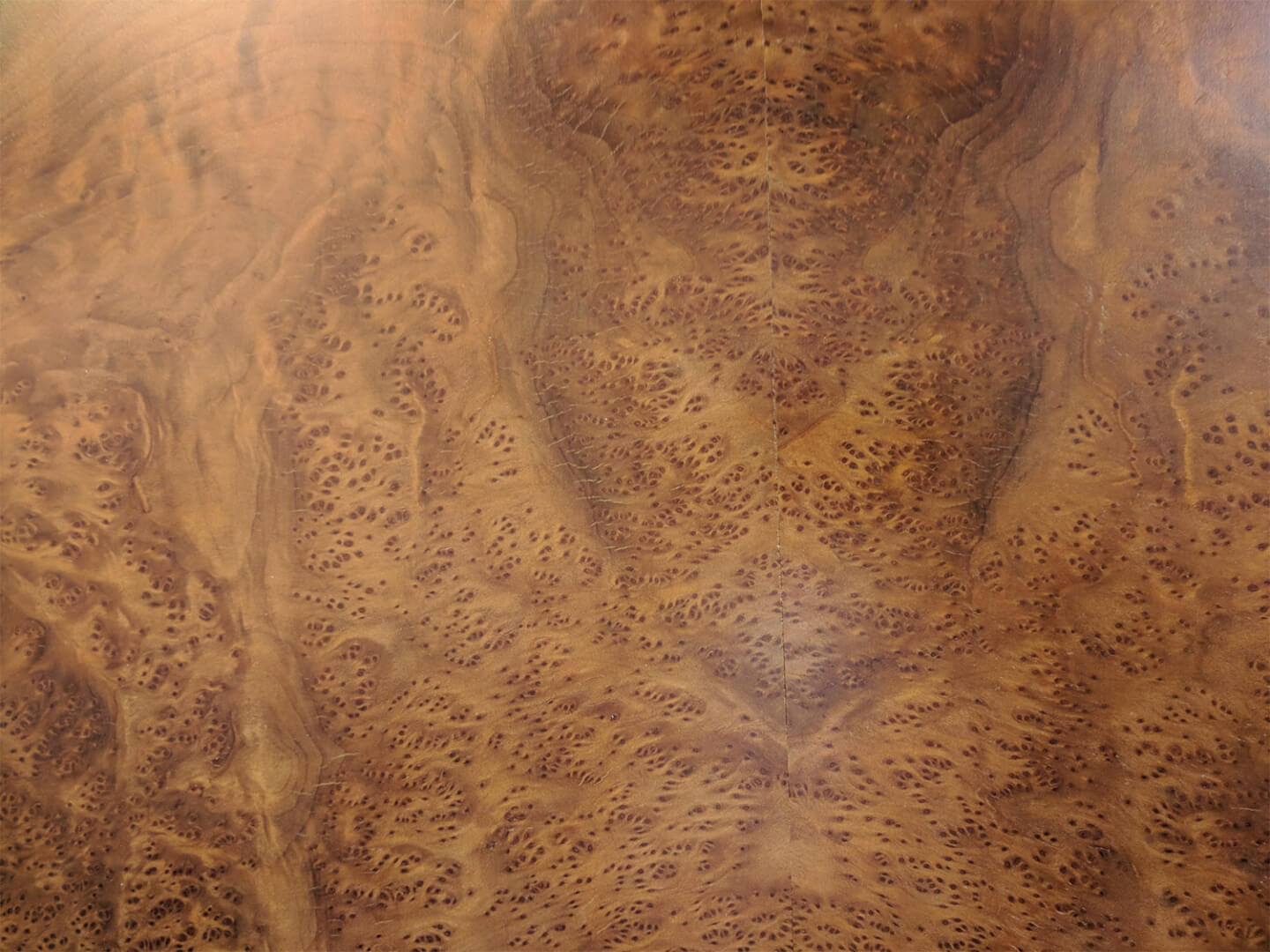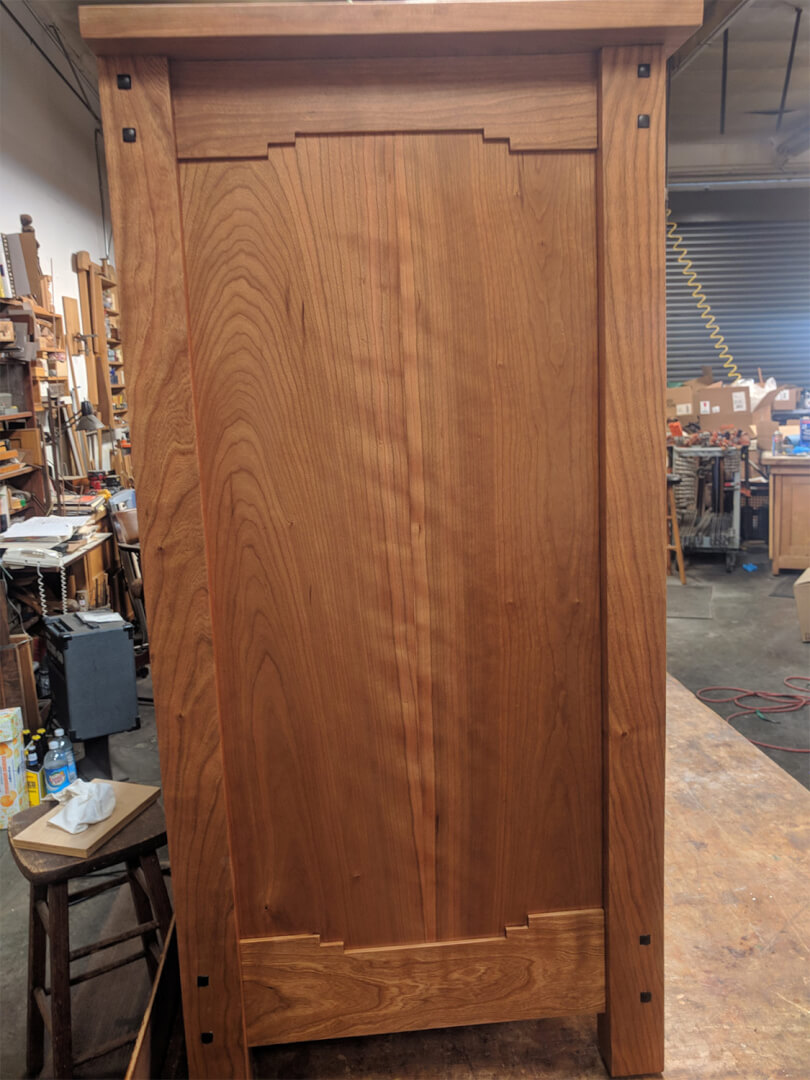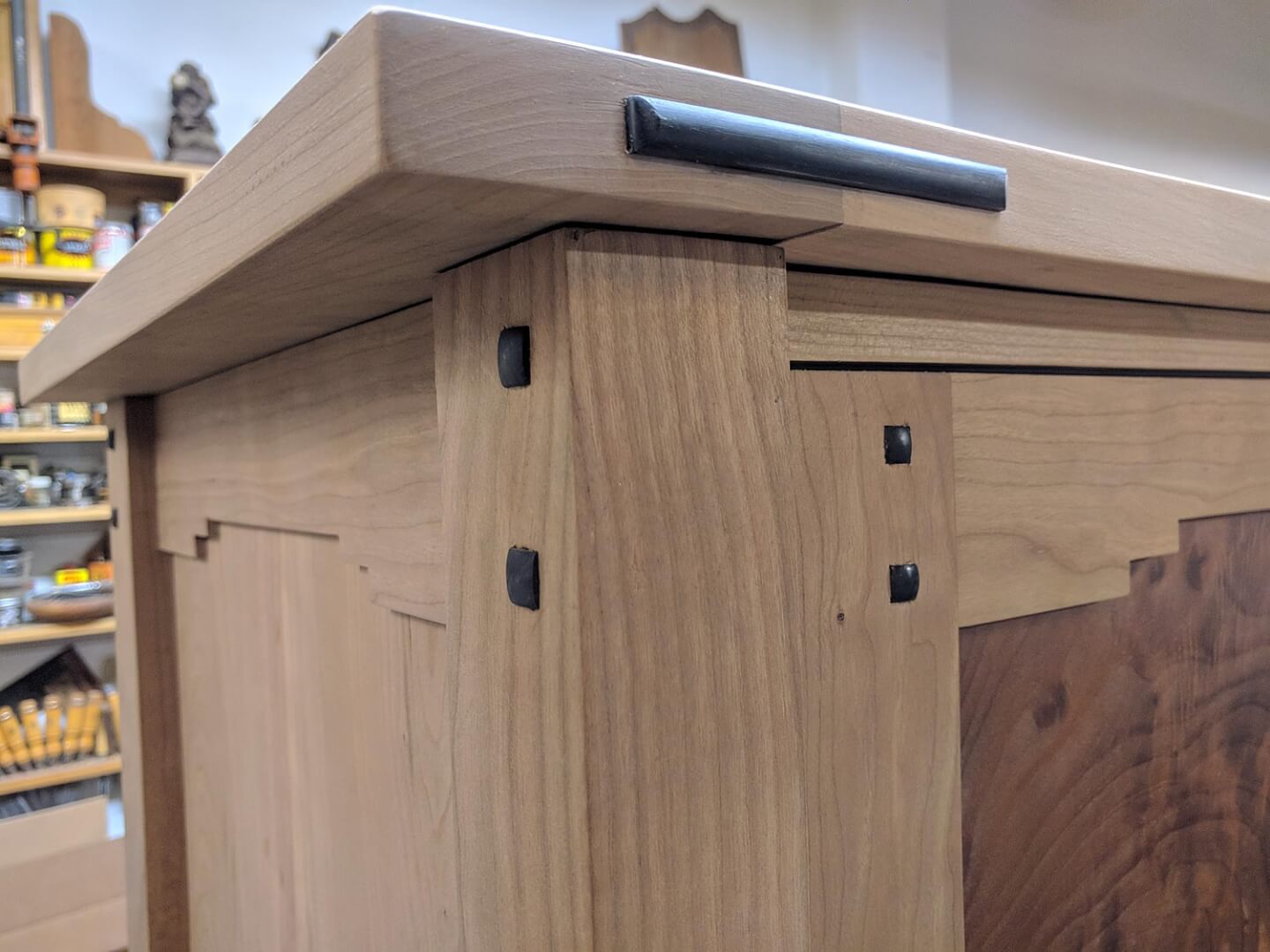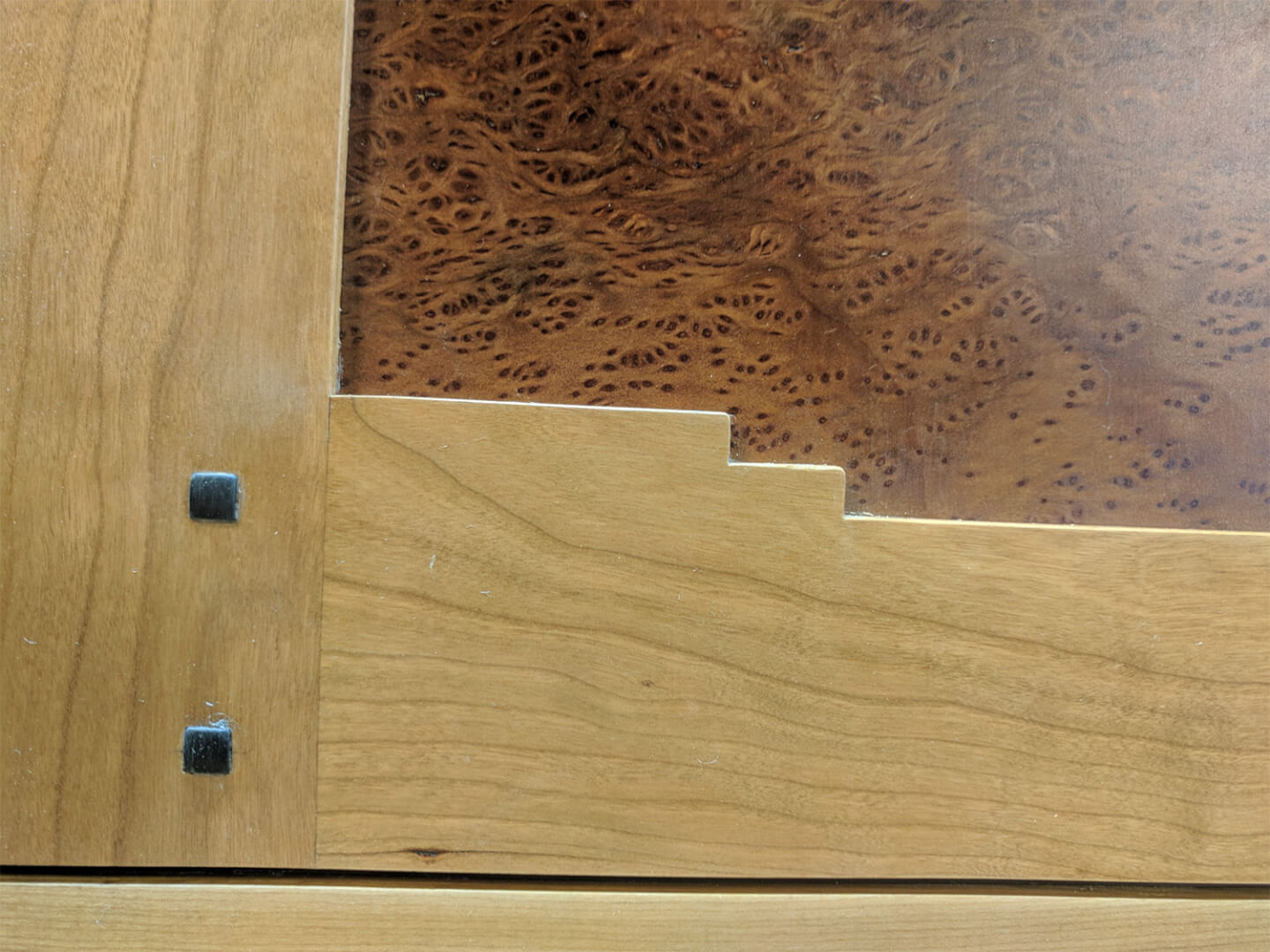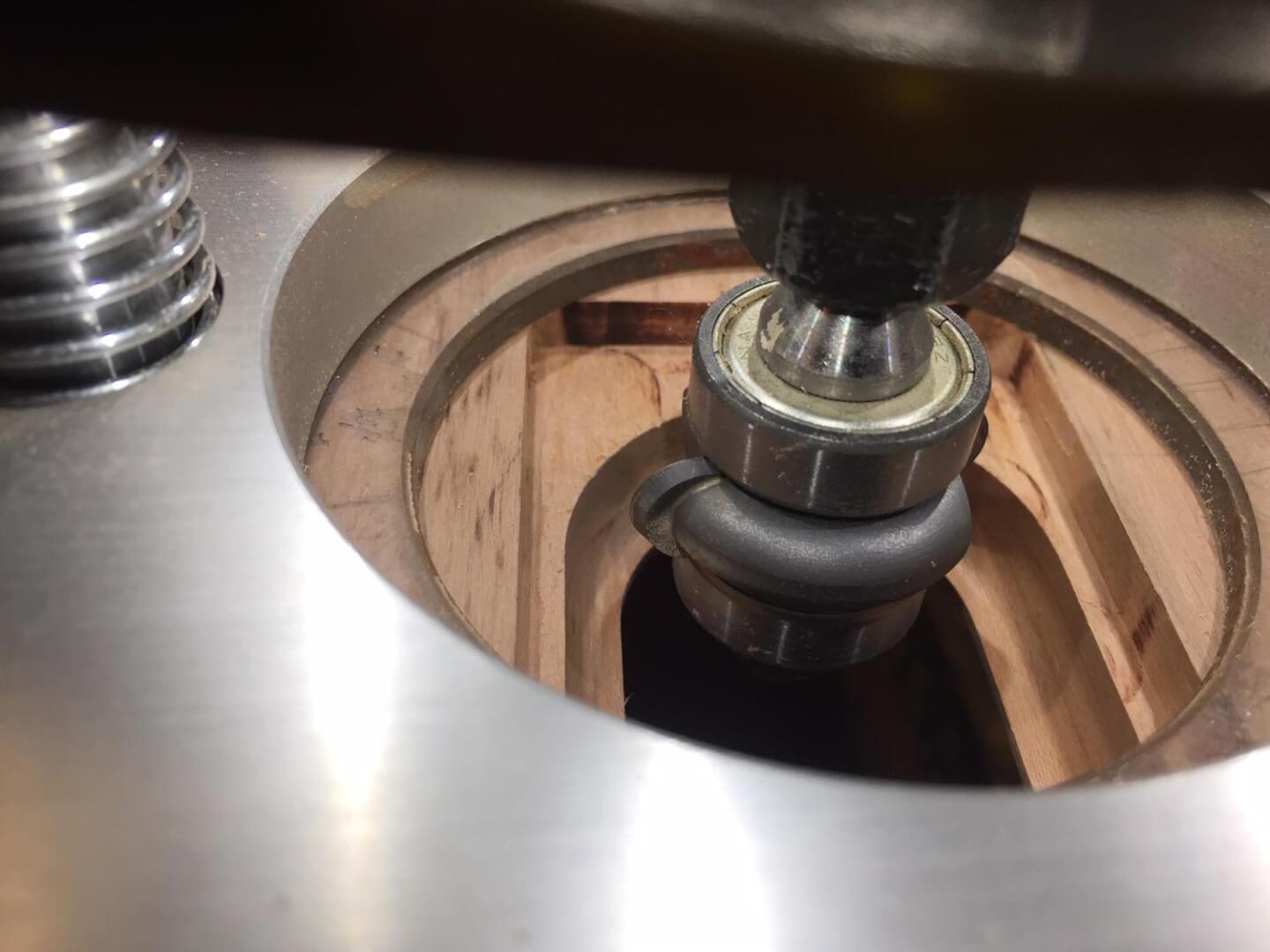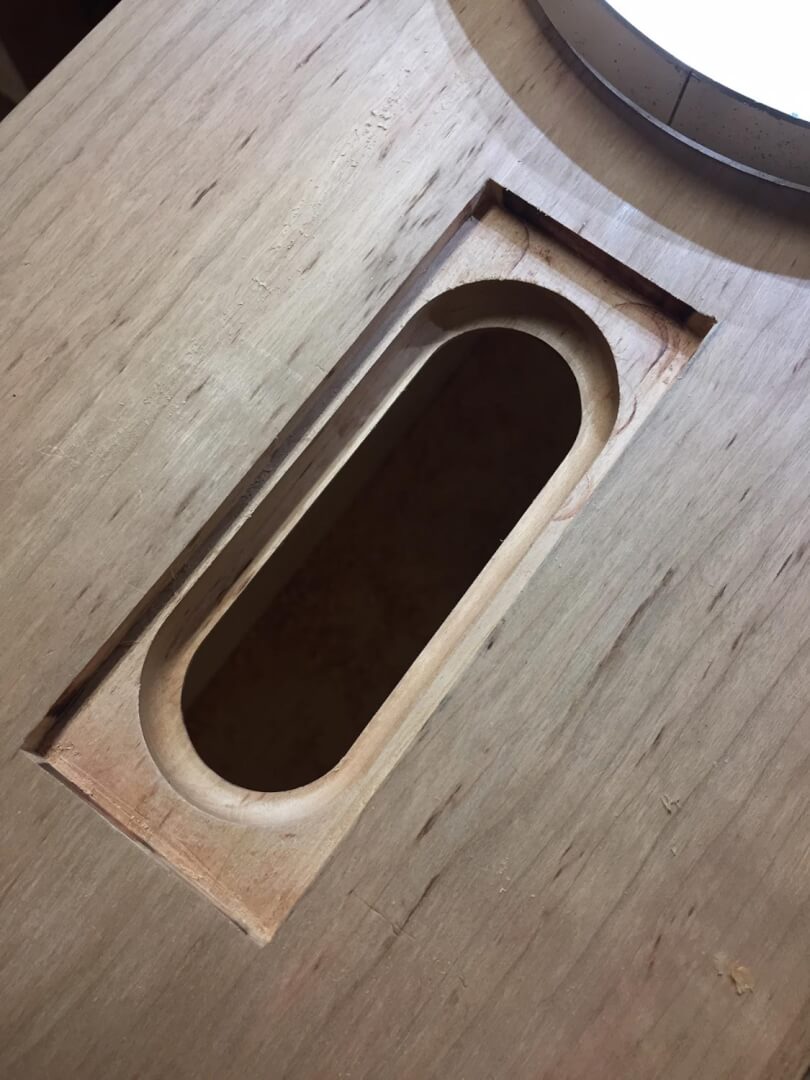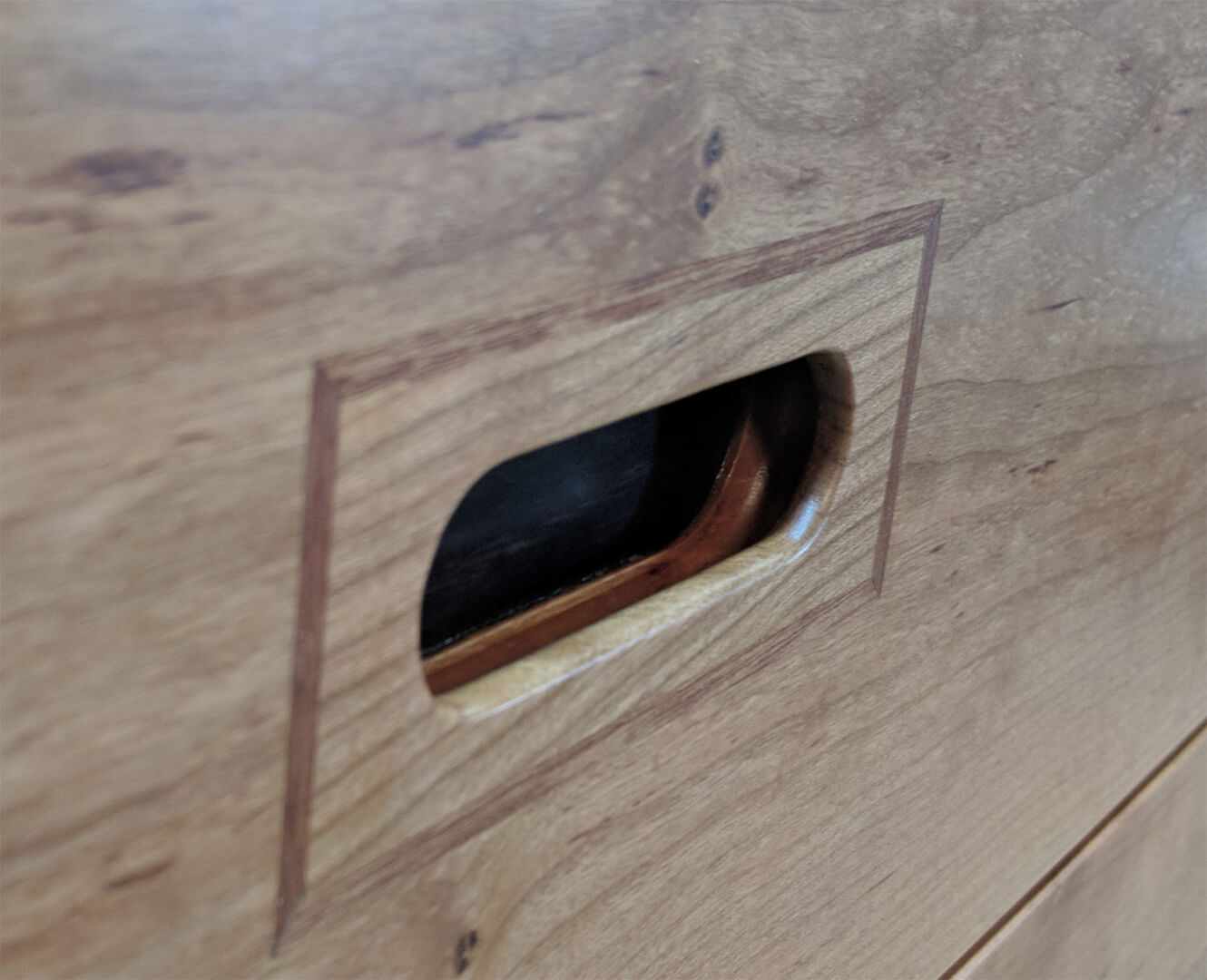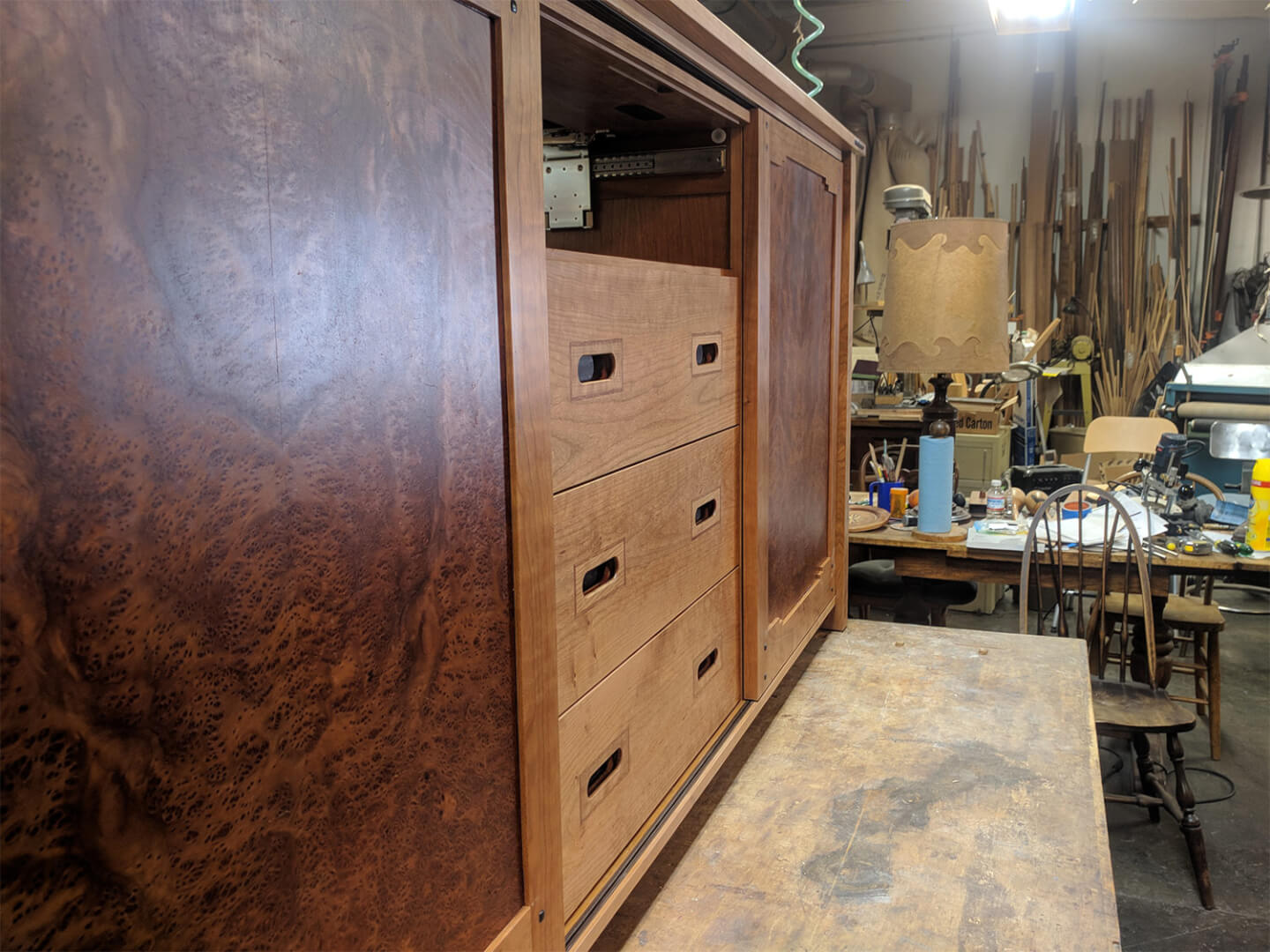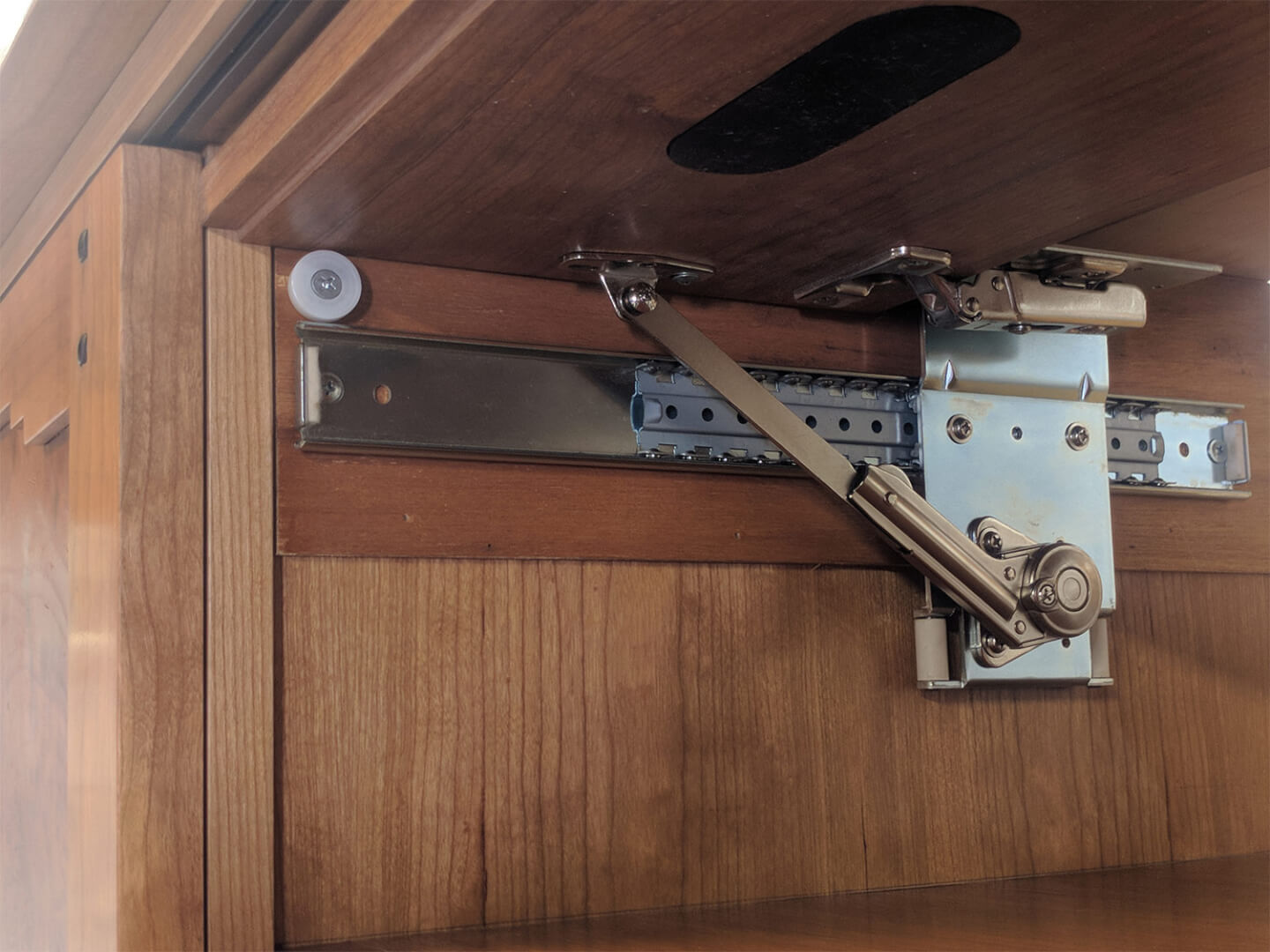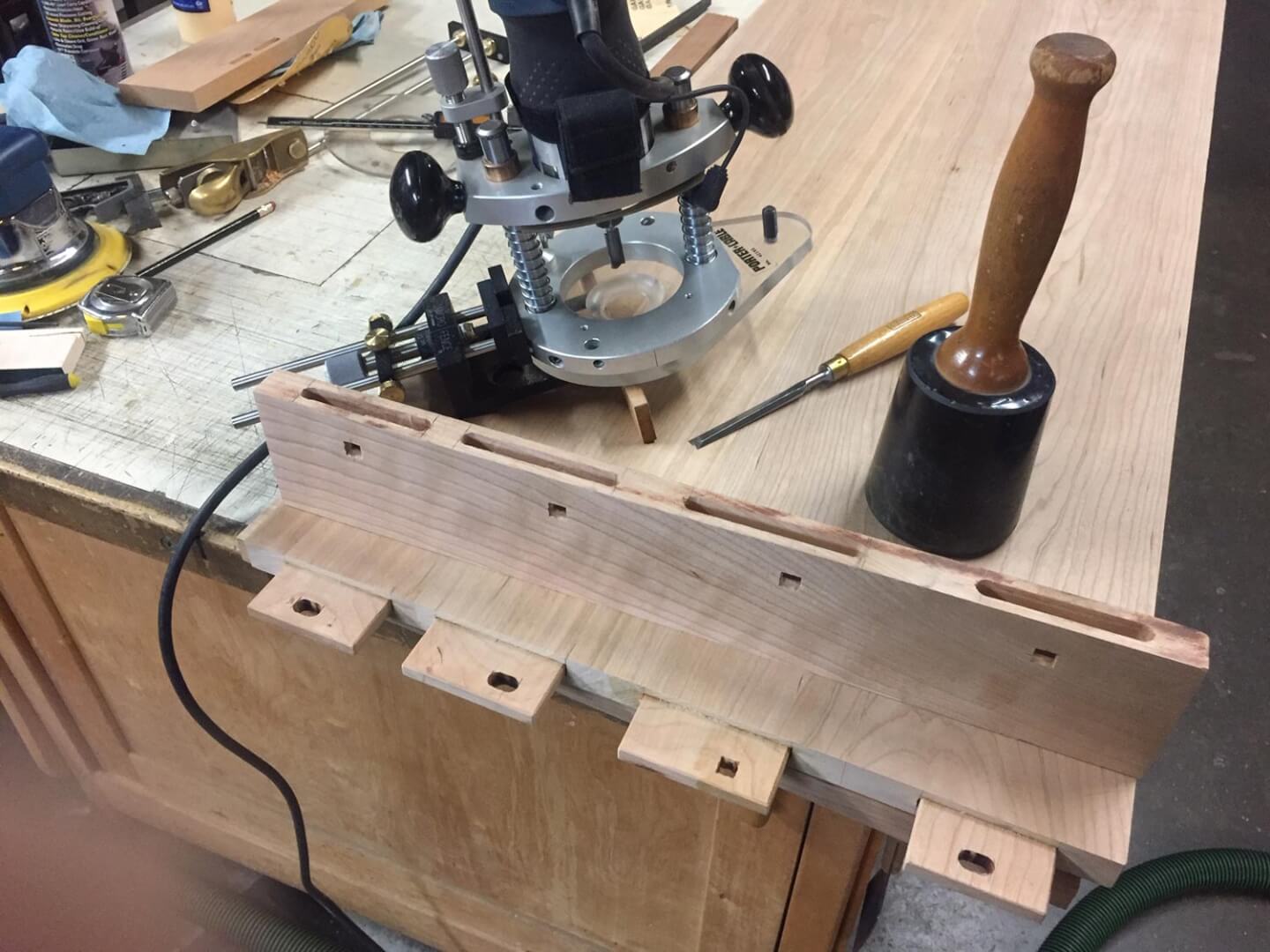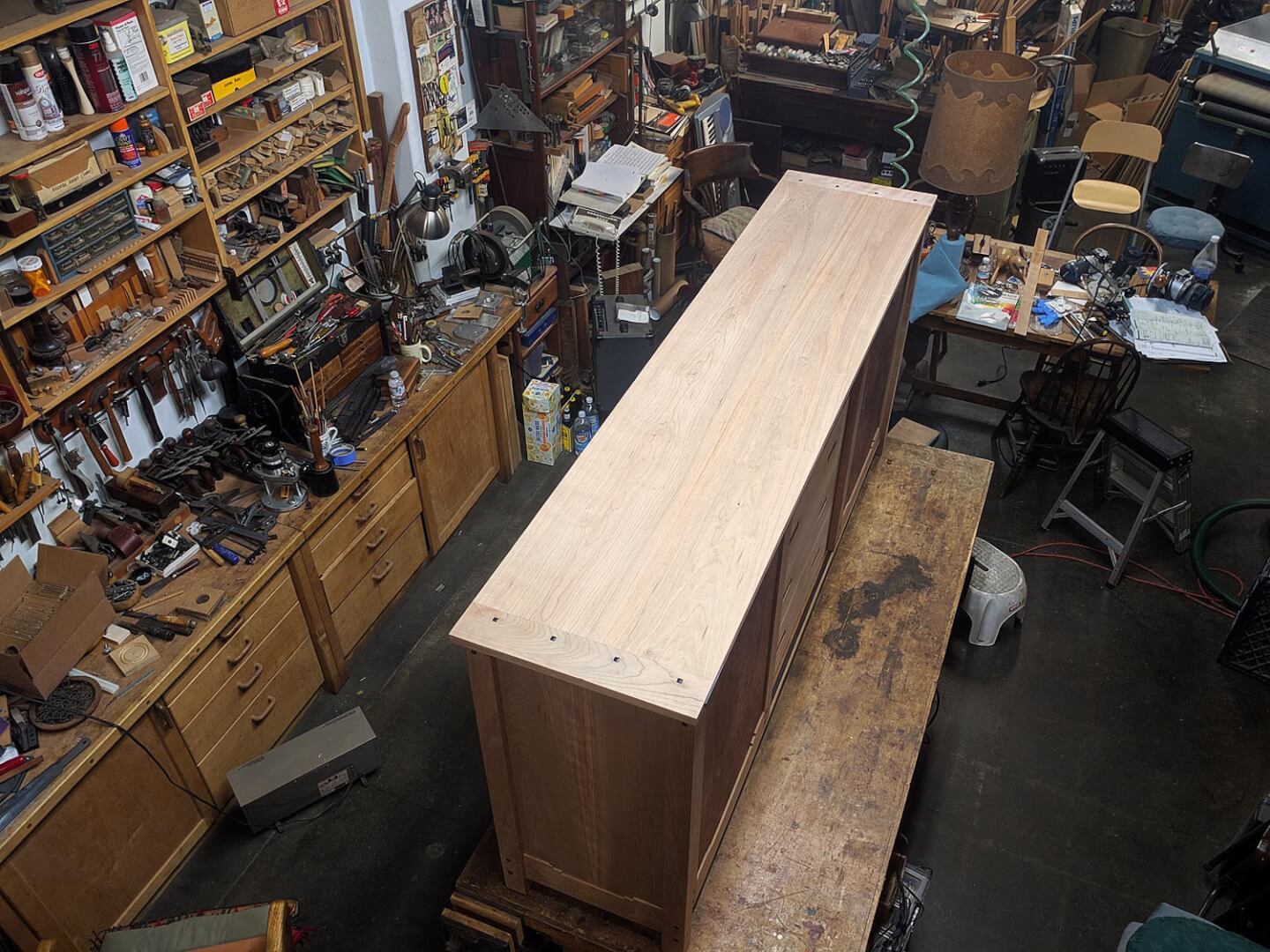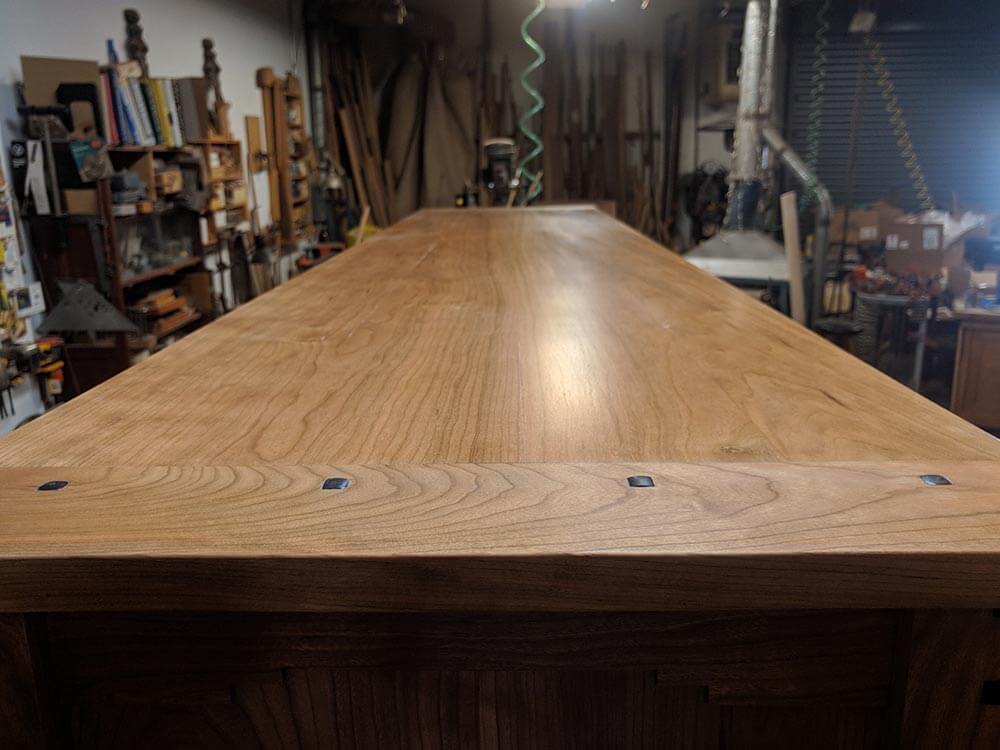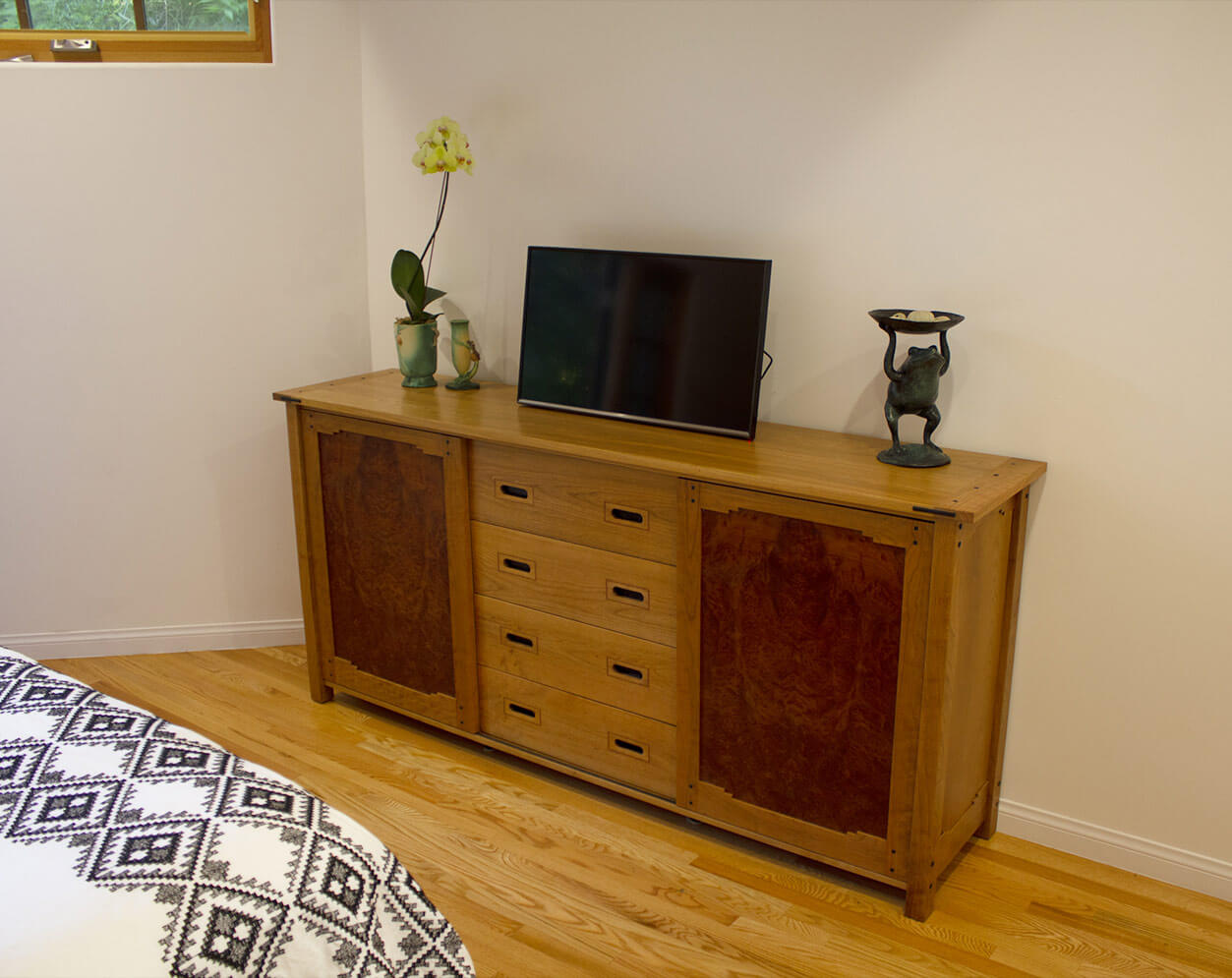Old friends wanted a piece for their new master bedroom and bath addition to serve as storage and/or media cabinet (that purpose was still in arbitration at this writing). After extensive research and focusing we decided on something leaning toward Greene & Greene styling. I suggested that the room architecture also seemed a little Southwestern and introduced a suitable rail style for the end and door frames. All in all, I think this was one of the more enjoyable projects I’ve ever done…both because of the project itself and for the satisfaction of doing it for such special people.
Client Rick & Patty Cunha
Date March, 2020
Tools MicroFence Edge Guide
Fifty-year-old redwood burl made a complimentary choice for the sherry door frames. I found the burl in the early eighties at a custom plywood manufacturer’s plant when I was looking for materials for another commission. There were six sequence-matched panels that had been glued up for someone and they had never come back to purchase them. I think I paid something like $20 per panel. Then they sat for over forty years in three different lofts over three different shops in one of my ‘someday I’ll use ’em pile‘. Nice to get to someday.
The 78″ long cherry top was made from four pieces of 7/8″ thick planks gradually milled down in steps from 5/4 stock. In between jointer and planer operations, the planks were stored on stickers with air flow all around. After a month or so of settling, the final dimension was milled and the ends capped with floating bread-board ends.
Loose tenons were glued into mortises in the ends of the six foot planks and elongated peg holes cut through the ends of the tenons that were to draw-fit the end cap pieces toward the planks. Square ebony pegs were made to hold the caps firmly and one of the four was glued permanents to it’s tenon (the third from the left). The other three pegs were left to float in their elongated holes to allow for expansion and contraction.
